How to connect to the space satellite and fulfill the childhood dream
Dmitry Pashkov from the Mordovian city of Ruzayevka is 28 years old - the age when many of us have already decided on our professional future and even have time to achieve certain professional heights. Dmitry in this sense is an exception - in a positive sense. By profession he is a system administrator, but by vocation he is a radio amateur. A few weeks ago, he became famous throughout the country, having intercepted a signal from the current Russian meteorological satellite Meteor-M2 at the time of a solar eclipse on March 20. I contacted Dimitriy and he kindly agreed to share his experience - to explain how each of us can make “communication with the cosmos” himself and achieve what each of us dreamed of in childhood - to see the Earth from space.
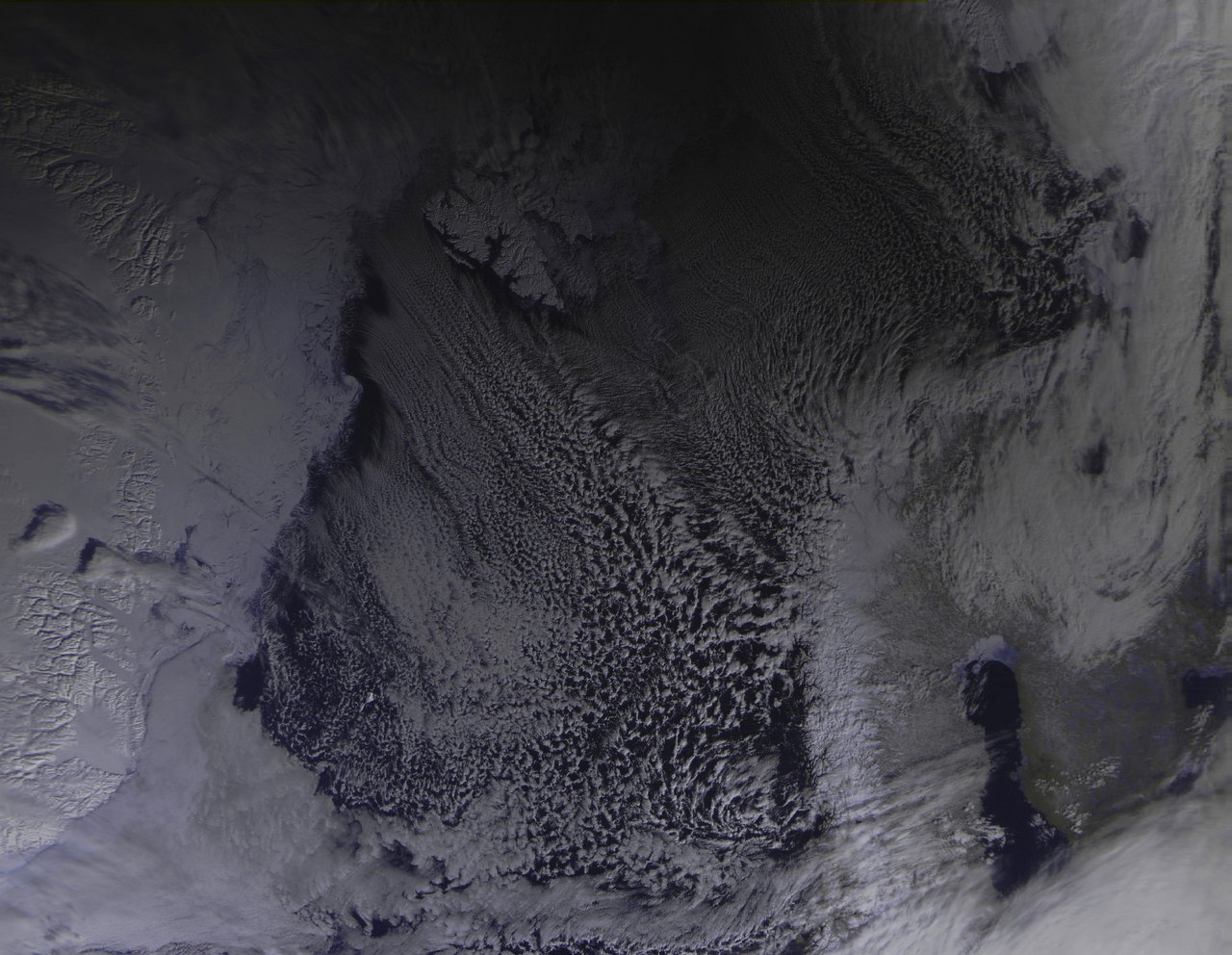
Original photo
')
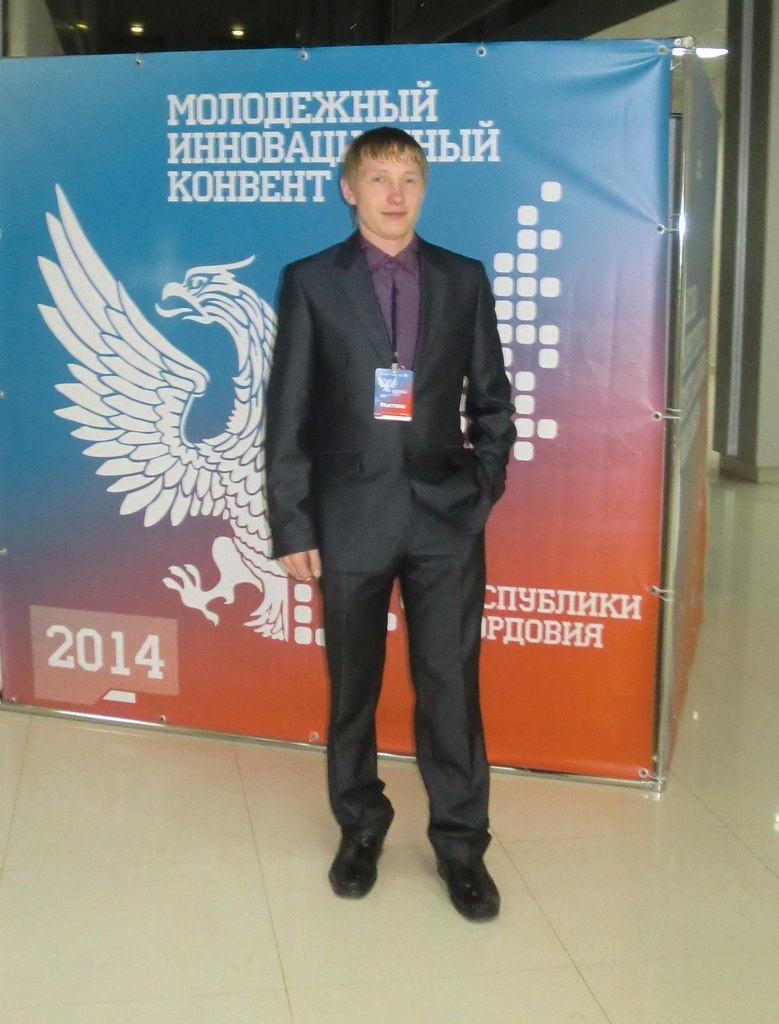
About Dmitry and his achievement wrote several online publications, but the amateur radio operator did not have time to catch the "star disease". And all this hype in the media frustrates him more than pleases: “I'm not a hero, I'm already bored, to be honest”. Nevertheless, his achievements were appreciated in the profile organization and in the near future Dmitry may move to Moscow to work in the Russian Space Systems OJSC.
- Dmitry, let's start right away with a refutation or confirmation of rumors: was the proposal from the RKS?
- Oh, I do not like this topic, to be honest. I have already read and heard enough in my address. What I have done can be done by many, if not all. And from me some kind of hero was made right. And I'm not like that. Will explain.
First of all, I don’t like publicity and the less they know me, the better. Secondly, they made such a sensation, they say, a guy from such and such a village accepted this and that (and many do not understand what it was about) and that now the RKS also called him. Almost the plot for the movie - the provincials noticed in Moscow, and everyone became happy.
What I do is done by people all over the country and even the world. Call can any of them. Just my case was publicized. Of course, the photo, which I got, to get an inexperienced radio amateur would be hard. The reason is in the remoteness of the apparatus, in my case, due to the distance from the polar circle, the apparatus was almost at the horizon.
I do not argue: I have a lot of experience in receiving, searching, identifying and resuscitating devices. And take a regular snapshot of the problems is not. And who knows about my capabilities and experiences, he just laughed. But from the hype in RuNet appeared a certain train on foreign sites. But I’m cooperating with different universities and private organizations around the world and don’t want to spoil my reputation. Why precisely spoil? Because people “in the subject line” understand that I haven’t done anything so special, and the noise, as if I discovered a new celestial body in the solar system.
Here, for example, what services I really consider important: I recognized the legendary COSMOS 2499 , found the WREN device and a couple of others, received signals from Phobos-Grunt, which never went away, reanimated the COMPAS device (in the photo below).
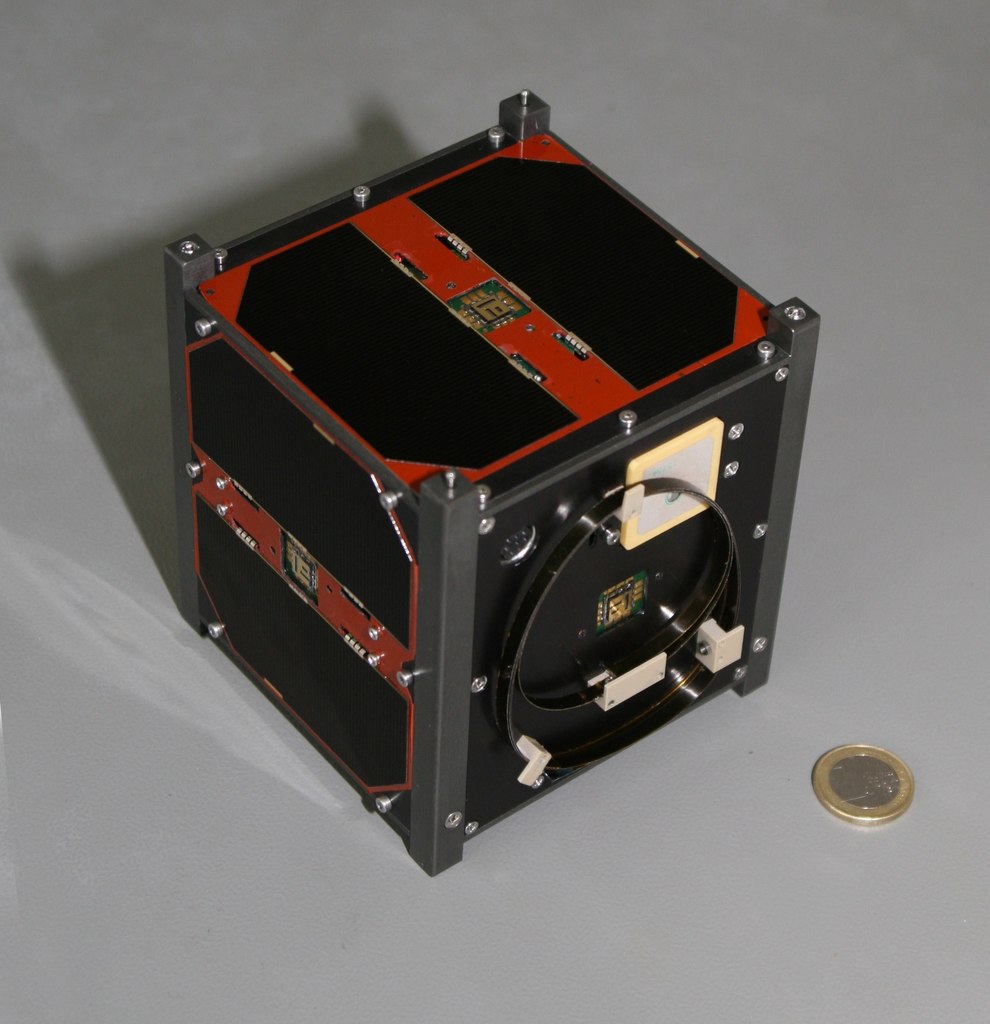
Against this background, getting photos from a meteorological satellite is nothing.
Note author: It is important to add that Dmitry received many thanks even from the leaders of the states. For example, from the President of Lithuania, because he became one of three radio amateurs who received a signal from their first satellite. Then there was gratitude from the leadership of Estonia. Dmitry more than once conducted a communication session with cosmonauts on the ISS, his personal callsign R4UAB.
- If you again believe the media, then by profession you are a system administrator, and by vocation - a radio amateur. Tell us about your childhood, getting an education and choosing a profession.
- I graduated from the National Research Mordovia State University named after N.P. Ogareva, faculty "Radio Engineering". And my grandfather instilled a love for radio engineering. I remember how he soldered chips in the evening, I began to take an example from him. His first radio station soldered in 12 years. And I was very proud that I did it myself. After setting it, I heard the voices of radio amateurs - more
10 ranges. Since there was no license, he could only listen to the voices. I remember how delighted. Later, children's walkie-talkies were bought, my friend and I began to communicate with them. Then one day someone connected to the third.
From the age of 17, I began working at a factory and bought the first wearable radio station in my life for my first salary. Received a license, call sign, went on the air and met with Ruzayevsky radio amateur.
As a consultant for the “Young Kulibins” children’s club, I established cooperation with the science city of Skolkovo (Dauria company). Ruzayevsky radio engineering students collect information on the location of sea and river vessels from three space satellites and send it to the company for further processing. For children, this is an invaluable experience with radio equipment.
- And how did it happen that you work as a system administrator?
- I studied programming and PC maintenance on my own. Once upon a time, the task of creating and maintaining a network in our area arose. We ourselves conducted, connected several dozen houses and apartments. The Internet only appeared in those years, and we, such advanced radio amateurs, also wanted to become part of a global information system. And, naturally, we decided to share this boon with our neighbors. In general, fun as they could. So I went to work as a sysadmin. Now that district network is already gone, but then I got an invaluable experience.
- And now we come to the most interesting - what have you done so complicated that in Russian space systems they paid attention to you?
- I did not do anything complicated. Any radio amateur who has at least some experience will be able to take pictures from meteorological satellites.
- If there is nothing difficult in these actions of yours, let's write down the steps in steps so that anyone can see the Earth from space or look into the depths of outer space. To which satellites, in principle, you can connect, and to which not?
- The word "connect" does not fit here. We simply receive the signals that come from the satellites, and then with the help of special software we process and obtain the result.
For beginners, I recommend the simplest equipment: an RTLSDR receiver and a quadrifilar antenna. The price of the receiver is 1000 rubles, and you can assemble the antenna yourself, although there are also “store” options.
For tracking satellites, I recommend the Orbitron program. And in order not to get confused in the huge number of satellites, where 90% do not work, you can install the update from my server , where I run all the working and interesting devices.
The frequencies of the satellites and their modulation are described here .
The program for adding frequencies to the Orbitron program is here .
If you purchased such a receiver, then you need to connect it to the Orbitron program. How to do this can be read here .
The connection is necessary to compensate for the Doppler effect, since the satellite is constantly in motion, so a frequency shift occurs.
- So, success depends on the receiver and the antenna. Tell me more about the antenna - how to assemble and how to configure?
- The quadrifilar spiral antenna (KSA) is a multi-element antenna system consisting of several radiators. These emitters can be connected to the power supply circuit, which generates exciting voltages at the inputs of the elementary emitters with the required amplitudes and phases.
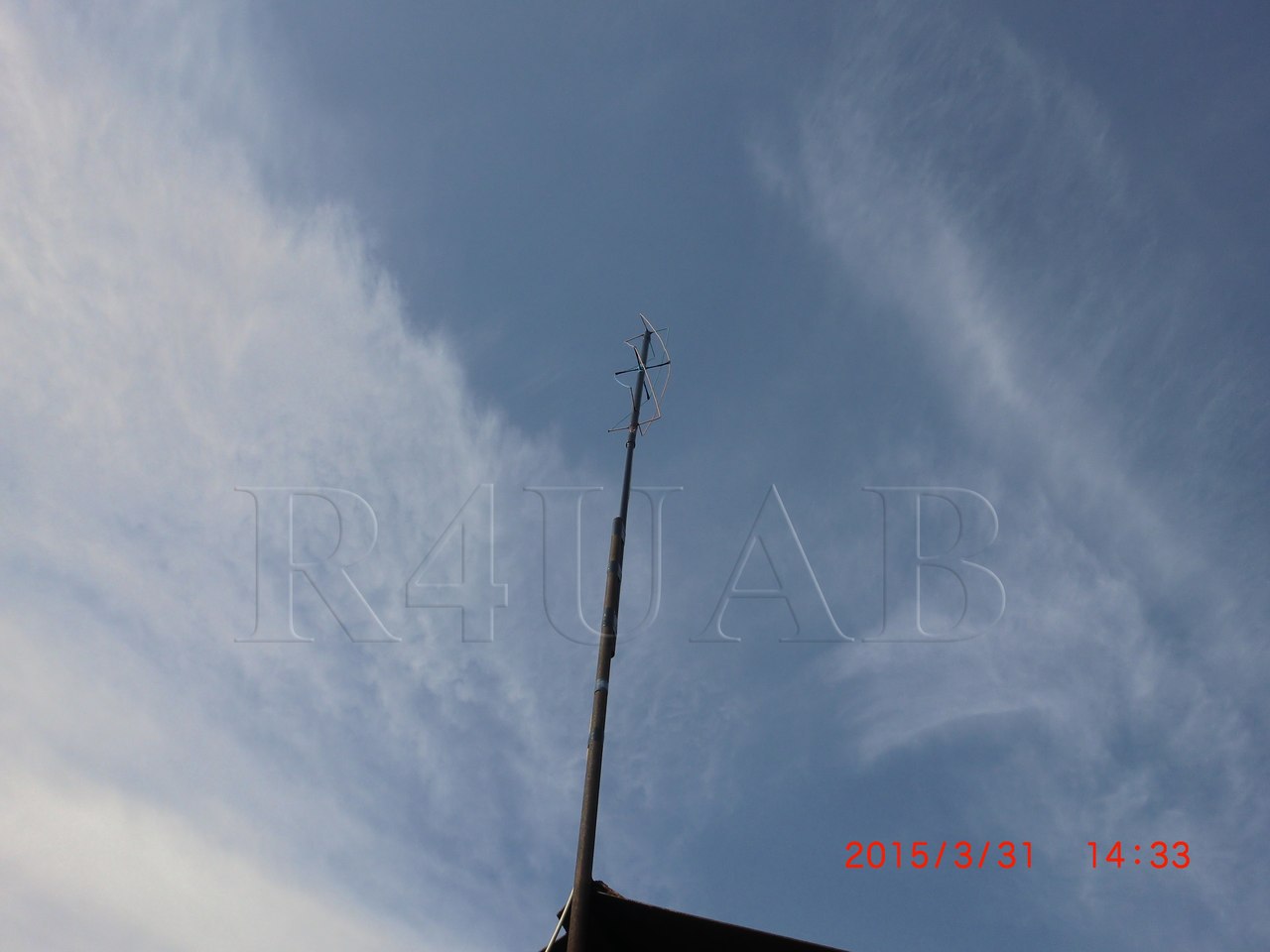
KSA has four elements, each of them is a spiral conductor, which is excited by the output of a strip power supply circuit. In the ideal case, the power scheme creates incident waves with the same amplitude and with a phase shift of 90 degrees.
The antenna consists of two frames, rotated one relative to the other at 90 degrees in phase. Hence the circular polarization and, since there are two elements, the gain is 4-5 dB, depending on the height-width ratio. And the antenna is bent in a spiral, as if bending down, and the diagram "bulges" upwards. In fact, the directivity pattern of the wire spiral frame extends in the direction of the smaller loop by analogy to the director-reflector, in our case upwards. If you change the phasing of the antenna power, the radiation pattern will be the same, but the hemisphere will be turned down. As a result, we have an antenna very suitable for satellite communications. Its diagram is a hemisphere directed upwards. There is no need to twist, the polarization is circular, and yes even the gain of 4 dB. And the bandwidth in the VHF range is very decent.
The directional pattern of a quadrifilar antenna and its gain:

General form


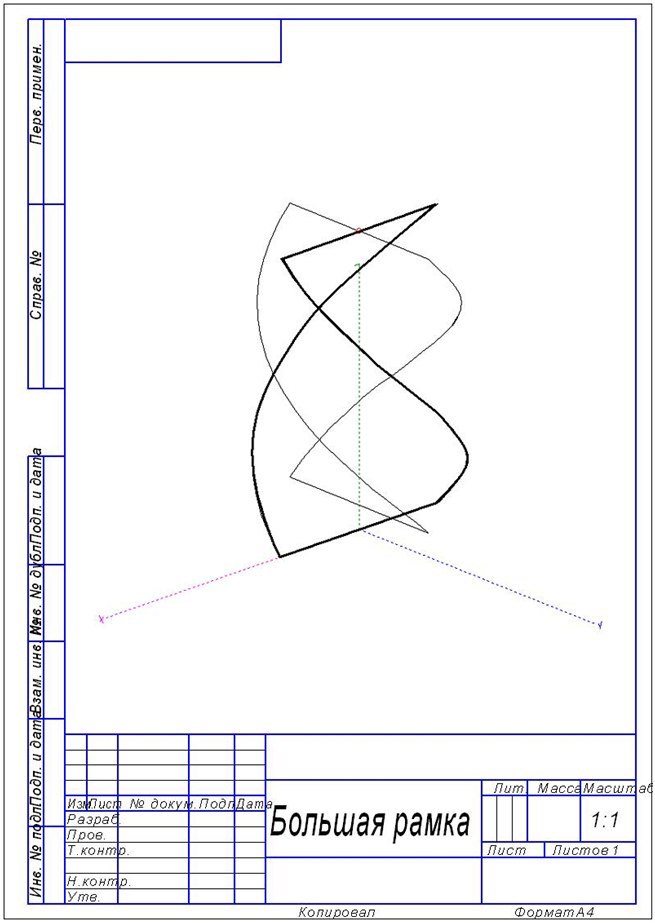
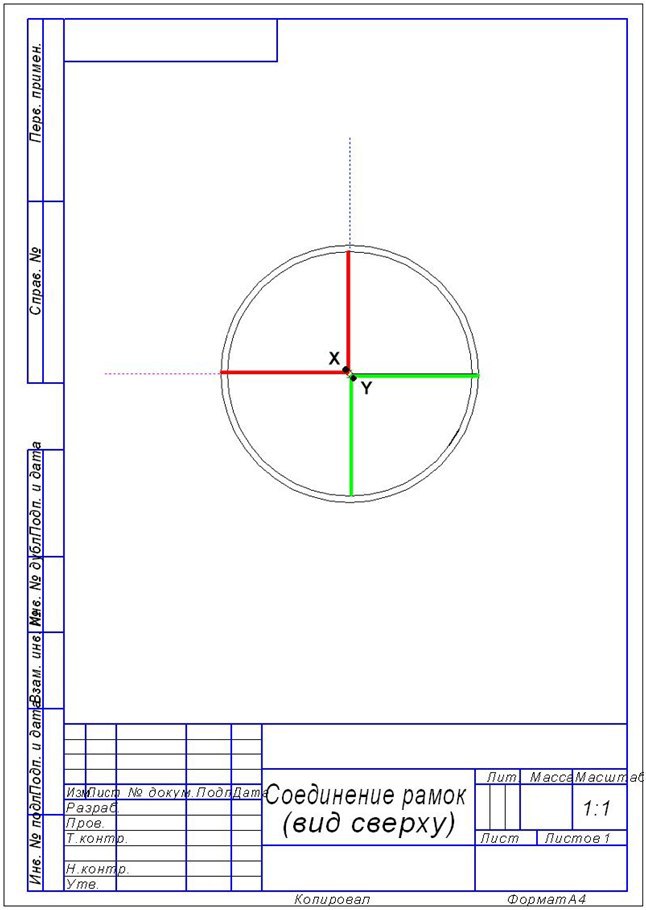
Antenna tuning is reduced to stretching / compressing the frames and images of elements of 2 mm each. Properly assembled antenna almost does not need to be adjusted. Here are some tips for setting up tips. Adjustment should be made only on the roof (not indoors). The basis of installation of the antenna is a dielectric. The distance to metal objects is desirable to make at least 3 meters.
Antenna cable specifications:
Cable
Cable type RG-58 a / u
Specifications:
Impedance -50 ± 2 ohm
Running capacity -83.94 pF / m
The shortening coefficient -1,26
The diameter of the central core -0.94 mm
Conductor Material -TC
The diameter of the dielectric -2.9 mm
Dielectric material -FPE
The outer diameter of the shell -5.03 mm
Shell Material -PVC
Main screen -DF
The density of the main screen -100%
Braid configuration -16x7x0.12 mm
Braid Material - TC
Braid Density -97%
Detailed specification: www.radiolab.ru/ru/attach_file/rg-58aublack.pdf
Legend:
TC - tinned copper
FPE - physically foamed polyethylene
PVC - polyvinyl chloride
DF - double-sided lavan-based aluminum foil
RG-58 A / U attenuation graph:
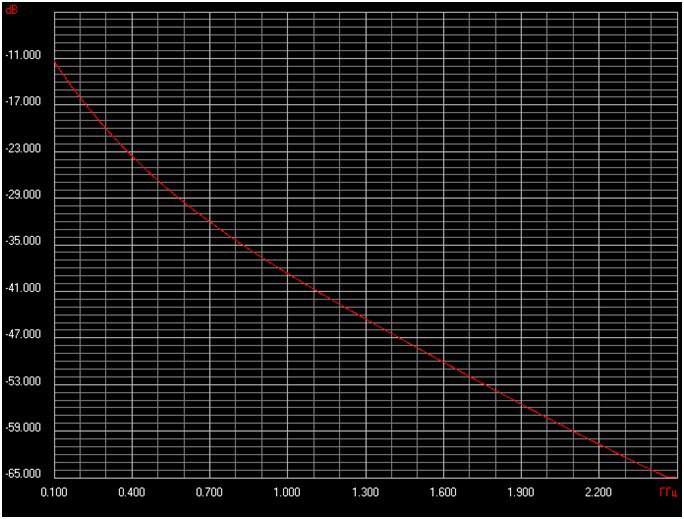
Taking this opportunity, I remind you that the fourth book of the series “Simple Science” and a scientific set for it have recently been published.


Original photo
')

About Dmitry and his achievement wrote several online publications, but the amateur radio operator did not have time to catch the "star disease". And all this hype in the media frustrates him more than pleases: “I'm not a hero, I'm already bored, to be honest”. Nevertheless, his achievements were appreciated in the profile organization and in the near future Dmitry may move to Moscow to work in the Russian Space Systems OJSC.
- Dmitry, let's start right away with a refutation or confirmation of rumors: was the proposal from the RKS?
- Oh, I do not like this topic, to be honest. I have already read and heard enough in my address. What I have done can be done by many, if not all. And from me some kind of hero was made right. And I'm not like that. Will explain.
First of all, I don’t like publicity and the less they know me, the better. Secondly, they made such a sensation, they say, a guy from such and such a village accepted this and that (and many do not understand what it was about) and that now the RKS also called him. Almost the plot for the movie - the provincials noticed in Moscow, and everyone became happy.
What I do is done by people all over the country and even the world. Call can any of them. Just my case was publicized. Of course, the photo, which I got, to get an inexperienced radio amateur would be hard. The reason is in the remoteness of the apparatus, in my case, due to the distance from the polar circle, the apparatus was almost at the horizon.
I do not argue: I have a lot of experience in receiving, searching, identifying and resuscitating devices. And take a regular snapshot of the problems is not. And who knows about my capabilities and experiences, he just laughed. But from the hype in RuNet appeared a certain train on foreign sites. But I’m cooperating with different universities and private organizations around the world and don’t want to spoil my reputation. Why precisely spoil? Because people “in the subject line” understand that I haven’t done anything so special, and the noise, as if I discovered a new celestial body in the solar system.
Here, for example, what services I really consider important: I recognized the legendary COSMOS 2499 , found the WREN device and a couple of others, received signals from Phobos-Grunt, which never went away, reanimated the COMPAS device (in the photo below).

Against this background, getting photos from a meteorological satellite is nothing.
Note author: It is important to add that Dmitry received many thanks even from the leaders of the states. For example, from the President of Lithuania, because he became one of three radio amateurs who received a signal from their first satellite. Then there was gratitude from the leadership of Estonia. Dmitry more than once conducted a communication session with cosmonauts on the ISS, his personal callsign R4UAB.
- If you again believe the media, then by profession you are a system administrator, and by vocation - a radio amateur. Tell us about your childhood, getting an education and choosing a profession.
- I graduated from the National Research Mordovia State University named after N.P. Ogareva, faculty "Radio Engineering". And my grandfather instilled a love for radio engineering. I remember how he soldered chips in the evening, I began to take an example from him. His first radio station soldered in 12 years. And I was very proud that I did it myself. After setting it, I heard the voices of radio amateurs - more
10 ranges. Since there was no license, he could only listen to the voices. I remember how delighted. Later, children's walkie-talkies were bought, my friend and I began to communicate with them. Then one day someone connected to the third.
From the age of 17, I began working at a factory and bought the first wearable radio station in my life for my first salary. Received a license, call sign, went on the air and met with Ruzayevsky radio amateur.
As a consultant for the “Young Kulibins” children’s club, I established cooperation with the science city of Skolkovo (Dauria company). Ruzayevsky radio engineering students collect information on the location of sea and river vessels from three space satellites and send it to the company for further processing. For children, this is an invaluable experience with radio equipment.
- And how did it happen that you work as a system administrator?
- I studied programming and PC maintenance on my own. Once upon a time, the task of creating and maintaining a network in our area arose. We ourselves conducted, connected several dozen houses and apartments. The Internet only appeared in those years, and we, such advanced radio amateurs, also wanted to become part of a global information system. And, naturally, we decided to share this boon with our neighbors. In general, fun as they could. So I went to work as a sysadmin. Now that district network is already gone, but then I got an invaluable experience.
- And now we come to the most interesting - what have you done so complicated that in Russian space systems they paid attention to you?
- I did not do anything complicated. Any radio amateur who has at least some experience will be able to take pictures from meteorological satellites.
- If there is nothing difficult in these actions of yours, let's write down the steps in steps so that anyone can see the Earth from space or look into the depths of outer space. To which satellites, in principle, you can connect, and to which not?
- The word "connect" does not fit here. We simply receive the signals that come from the satellites, and then with the help of special software we process and obtain the result.
For beginners, I recommend the simplest equipment: an RTLSDR receiver and a quadrifilar antenna. The price of the receiver is 1000 rubles, and you can assemble the antenna yourself, although there are also “store” options.
For tracking satellites, I recommend the Orbitron program. And in order not to get confused in the huge number of satellites, where 90% do not work, you can install the update from my server , where I run all the working and interesting devices.
The frequencies of the satellites and their modulation are described here .
The program for adding frequencies to the Orbitron program is here .
If you purchased such a receiver, then you need to connect it to the Orbitron program. How to do this can be read here .
The connection is necessary to compensate for the Doppler effect, since the satellite is constantly in motion, so a frequency shift occurs.
- So, success depends on the receiver and the antenna. Tell me more about the antenna - how to assemble and how to configure?
- The quadrifilar spiral antenna (KSA) is a multi-element antenna system consisting of several radiators. These emitters can be connected to the power supply circuit, which generates exciting voltages at the inputs of the elementary emitters with the required amplitudes and phases.

KSA has four elements, each of them is a spiral conductor, which is excited by the output of a strip power supply circuit. In the ideal case, the power scheme creates incident waves with the same amplitude and with a phase shift of 90 degrees.
The antenna consists of two frames, rotated one relative to the other at 90 degrees in phase. Hence the circular polarization and, since there are two elements, the gain is 4-5 dB, depending on the height-width ratio. And the antenna is bent in a spiral, as if bending down, and the diagram "bulges" upwards. In fact, the directivity pattern of the wire spiral frame extends in the direction of the smaller loop by analogy to the director-reflector, in our case upwards. If you change the phasing of the antenna power, the radiation pattern will be the same, but the hemisphere will be turned down. As a result, we have an antenna very suitable for satellite communications. Its diagram is a hemisphere directed upwards. There is no need to twist, the polarization is circular, and yes even the gain of 4 dB. And the bandwidth in the VHF range is very decent.
The directional pattern of a quadrifilar antenna and its gain:

General form




Antenna tuning is reduced to stretching / compressing the frames and images of elements of 2 mm each. Properly assembled antenna almost does not need to be adjusted. Here are some tips for setting up tips. Adjustment should be made only on the roof (not indoors). The basis of installation of the antenna is a dielectric. The distance to metal objects is desirable to make at least 3 meters.
Antenna cable specifications:
Cable
Cable type RG-58 a / u
Specifications:
Impedance -50 ± 2 ohm
Running capacity -83.94 pF / m
The shortening coefficient -1,26
The diameter of the central core -0.94 mm
Conductor Material -TC
The diameter of the dielectric -2.9 mm
Dielectric material -FPE
The outer diameter of the shell -5.03 mm
Shell Material -PVC
Main screen -DF
The density of the main screen -100%
Braid configuration -16x7x0.12 mm
Braid Material - TC
Braid Density -97%
Detailed specification: www.radiolab.ru/ru/attach_file/rg-58aublack.pdf
Legend:
TC - tinned copper
FPE - physically foamed polyethylene
PVC - polyvinyl chloride
DF - double-sided lavan-based aluminum foil
RG-58 A / U attenuation graph:

The book "Simple Science"
Taking this opportunity, I remind you that the fourth book of the series “Simple Science” and a scientific set for it have recently been published.

Source: https://habr.com/ru/post/365399/
All Articles